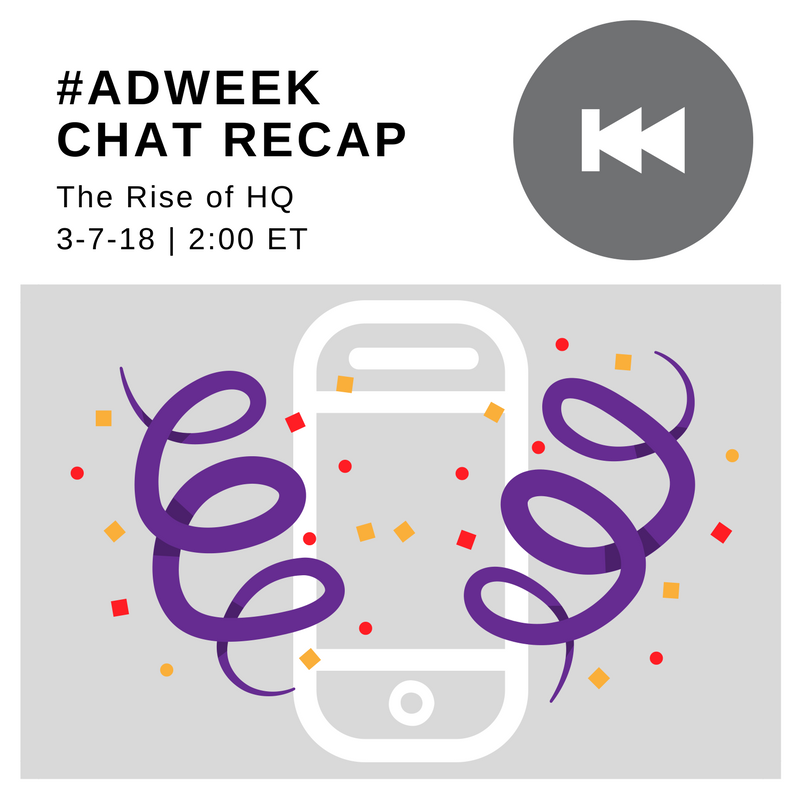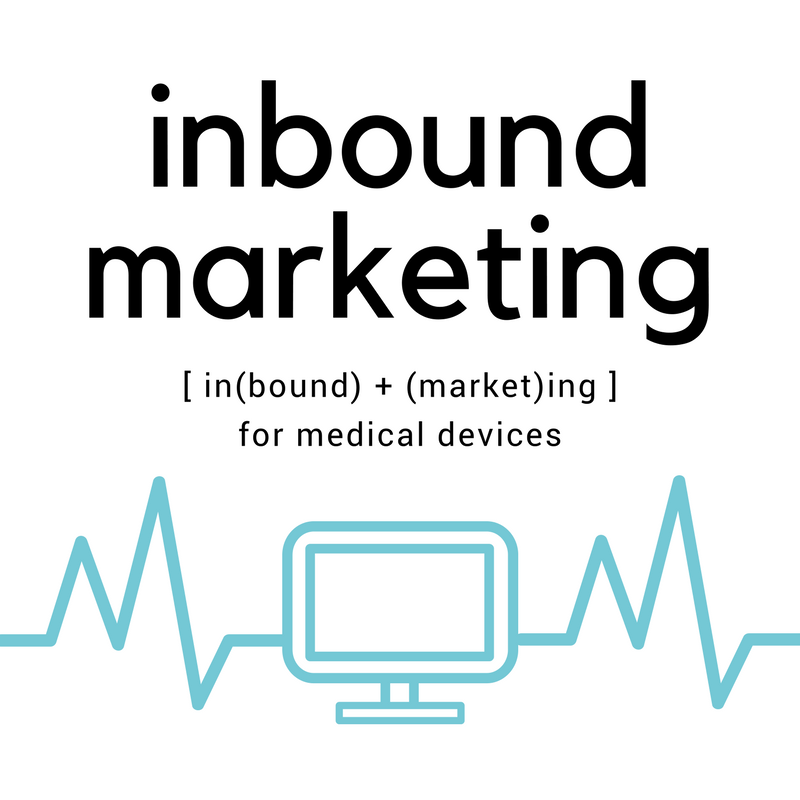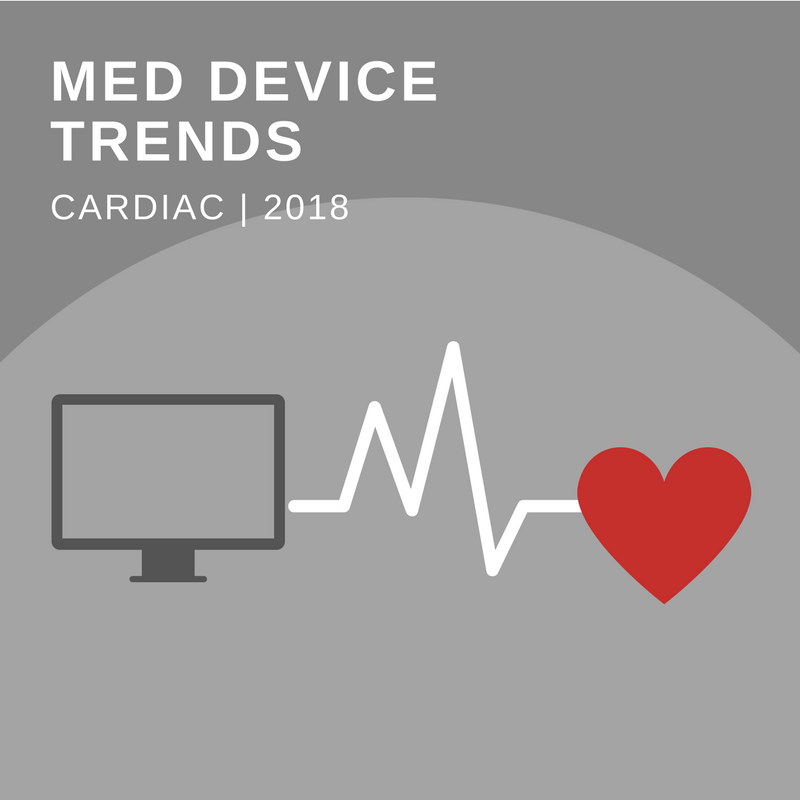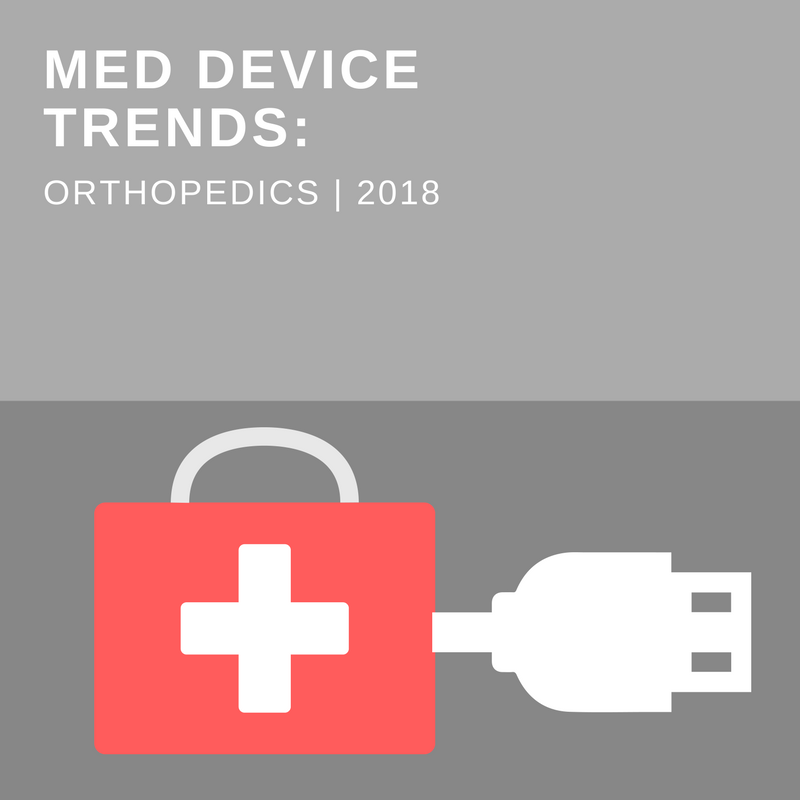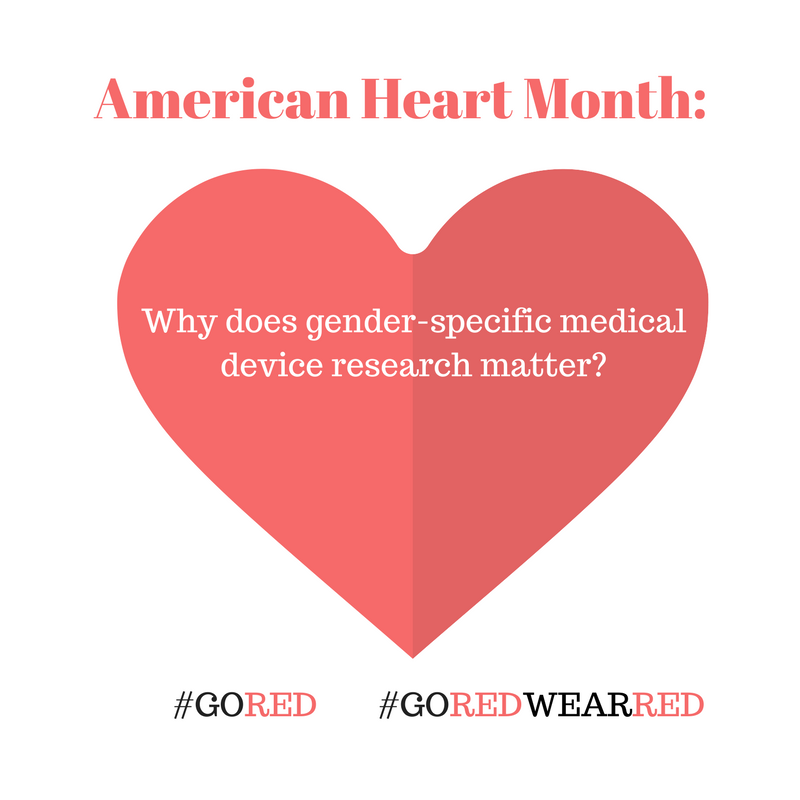It can seem like a catch-22: you’re looking for a great agency with strong creative, and you need an agency with medical device experience. It can be like finding a needle in a haystack. The consumer agencies might be able to boast splashy creative, but might not have a clue about the process and precision involved with medical device advertising and promotion. Science-heavy agencies often lean toward pharmaceutical advertising, which has much different creative and timing needs. So, what should you look for when choosing an agency for your medical device?
Experience
Medical device advertising in unlike other specialties because it demands a high degree of medical knowledge combined with product knowledge. People with experience reading and interpreting medical research, people with an understanding of human anatomy, people with a background in science, people who understand FDA requirements—these are the people who are going to be the most valuable when working on a medical device advertising project. And while pharmaceutical advertisers often have the science background to handle the highly technical information that needs to be communicated, it’s the ability to do that at a very fast pace that sets medical device advertisers apart. Because the pace of innovation is so much faster in the medical device industry, that skill is essential to a successful product launch.
Strategy
Unlike pharmaceutical makers, who enjoy several years of patent life on their products, medical device makers are constantly coming up with new iterations of their technologies. This sped-up pace of innovation means that what’s new today may be rendered obsolete by the competition very quickly, and the strategy you launch with may not reflect the market realities two or three years down the road. And, also unlike in pharmaceutical marketing, if you miss the mark with a medical device launch, there’s rarely a do-over. Getting the strategy right at the beginning should be the priority of any agency you work with. That means they understand all of the factors that could effect the product’s trajectory from the start, and are able to recommend a path that focuses on winning in the most realistic scenario.
Strong Creative
Pharmaceutical advertising is often focused on an abstract outcome, but medical device advertising is rooted in the concrete, physical world. The representation of the device itself—either in the anatomy or on its own—is a crucial component of delivering the features and benefits messaging. It’s easy to make a car look cool, it’s not so easy to make wires, catheters, leads, sensors, mesh, or other medical device components look compelling. It takes a high degree of artistry and polish to make these scientific components come alive. And simply having a stunning visual is not enough. That artwork has to make sense within an airtight creative concept that perfectly encapsulates the overall value message AND the clinical application of the product. With all of these elements on the table, it takes an experienced creative director to bring everything together into ads and collateral that will speak to the sophisticated medical audience.
Checks and Balances
Medical device advertising takes a village to create, and every member of the team needs to be able to pick up on and correct any errors, down to the smallest detail. In medicine, precision is everything. Deep product knowledge helps the entire team ensure the accuracy of what is being said and what is being shown. Copy, art, editorial, and account all work together to check the work and make sure that everything makes sense, is on brief, is on brand, and is on time.
Are you looking for an agency for your medical device in 2019? Get in touch!
#AdweekChat Recap: The Rise of HQ
What started with only a few thousand players is now over a million and counting. What does the rise of HQ Trivia mean?
HQ, for the uninitiated, is a trivia-style game show that can only be accessed through an app. The game is played twice a day, and upbeat host Scott Ragowsky guides the players through a series of 12 increasingly difficult questions for a chance to win a piece of the prize money (winners split the money evenly—sometimes that means the winners get little more than a dollar).
One obvious area that HQ will undoubtedly influence is the world of apps. The discussion on health apps was of particular interest to us as a medical device advertising agency. Based on the feedback from the group, it doesn’t seem like there is any one app in the health and wellness space that has taken off in the same way HQ has—the question being if any apps help gamify a healthy lifestyle. Most of the apps that were mentioned track, train, or teach, but I wouldn’t say that there was true gamification going on in the space. It’s surprising, given that it’s a crowded space for apps. Among the 100,000 current health and fitness offerings available in the App Storeon Digital Trends’ list of the best iPhone apps, only one was truly a game: Zombies, Run! For now, it looks like there is lots of room for marketers to incorporate creativity and fun into their health-related apps.
The discussion then veered into a strategic debate on whether or not it was wise to launch an app without a revenue plan. In other words: build a following first, then introduce advertising, or launch with ads already in place? General consensus was that establishing a fan base first and then launching the advertising portion later was within the acceptable limits of risk, especially with numbers like HQ has.
What does all this tell us about apps in the healthcare, and specifically the medical device space? Well, we know that patients now are more engaged and informed than ever. Now, can the industry innovate and provide technologies to keep up with our tech-savvy society and our high level of technological engagement that also support the clinical objectives of doctors? That remains to be seen!
#AdweekChat takes place each Wednesday at 2:00 ET on Twitter for advertising professionals to discuss a variety of industry-related topics.
#AdweekChat Recap: Self-Care in the Digital Age
This week’s Adweek Chat was on the topic of self-care. It’s no secret that marketing and advertising can be a high-stress job, and with our current level of constant connectedness thanks to the internet, the question of how to unplug in order to unwind is an important one.
We noted in the discussion that medical device advertising is particularly fast-paced, owing to the intense clockspeed of innovation in the industry, but it’s also particularly rewarding. While others in the discussion kept things in perspective with sentiments like, “Hey, it’s advertising, not brain surgery,” we were quick to point out that unlike consumer advertising, in medical device advertising the product you help launch might just save someone’s life!
It’s that sense of contribution to the common good that helps offset the everyday stresses of the medical device marketing life, but leave it to us tech geeks to find apps to help alleviate stress, too. Here are a few that make our lives easier:
Headspace: App that makes quieting your mind and meditating quick, easy, and enjoyable.
Trello: it’s not just for keeping track of project planning. With Trello, you can make a checklist for just about anything—even one for alternative things to do when you have the urge to check social media!
Bullet Journal: More than any other app, this has had the biggest impact on our business and our well being. By taking the time to set goals, track our daily tasks, and index journals, we’ve increased our productivity and our peace-of-mind.
With the world more constantly connected than ever before, there’s lots of room for creativity when it comes time to relax. That’s what keeps us sharp, focused, and loving what we do.
#AdweekChat takes place each Wednesday at 2:00 ET on Twitter for advertising professionals to discuss a variety of industry-related topics.
Inbound Marketing for Medical Devices
With doctors’ and other qualified decision makers’ schedules increasingly squeezed, the core of medical device sales—the face-to-face meeting—is becoming more and more difficult to obtain. With time being at such a premium, it makes sense to explore avenues of non-personal promotion, and inbound marketing is a method that complements the established medical device sales formula.
At the heart of inbound marketing is a concept so simple that it’s easy to overlook: the customer has a problem, and they are looking for a way to solve it. That journey—what’s referred to as the buyer’s journey—is the core of inbound marketing. When a customer has the type of problem that your product can help solve, you want to make sure you’re showing up where they’re looking, and that place is the internet. This is not the “traditional” way we think of internet marketing, though. Rather than purchasing banner ads (that they’ll most likely ignore), this is a strategic effort to show up when and where potential customers are looking for solutions to their problems. Here are the 3 basic elements of an inbound marketing campaign:
Content
Content actually serves two purposes in an inbound marketing campaign. First, it is how you can begin to educate the customer about the problem. This is the first step in the buyer’s journey. The customer has a problem, they’ve searched online for answers, and they have stumbled upon your blog post. The content of the blog post, however, is not a features and benefits piece of advertising about your product. The topic might be “Accessing the Radial Artery Without a Sheath” or “Navigating the Heart During Cardiac Ablation.” (In traditional Pharma advertising, these would be considered “unbranded” promotions.) The key is that the content is deliberately NOT about the product, but about the PROBLEM that the target audience has. Next, we’ll share the second way content is used in inbound marketing.
Offer
The other purpose of content in an inbound marketing campaign is to provide something of value to the potential customer in exchange for their contact information. Once the customer has found the helpful information you have provided on your blog, they may be looking for more. By offering to provide more information, you help them along their buyer’s journey toward making the decision to try your product. You have probably taken part in this process before: any time you enter your name and email address to find out more information, sign up for an email list, or download an e-book, you are taking part in this process of exchanging contact information for exclusive content. For medical device marketers, this type of content can take the form of a white paper, a webinar, or a case study.
Follow-through
Once the potential customer has entrusted you with their contact information and indicated their interest in your product, following up is very important. At this stage, the potential customer has gone from just a person looking for answers to a lead. There are several different ways you can go, but one thing not to do is nothing. A personal email is a good way to start, but that’s not always feasible on a large scale. Some companies have started using automated workflow software to help manage and nurture leads that come in through their content offer forms. Additional offers can be extended through your email campaign as well. The point is to continue showing that your product is relevant to their situation, and could be the solution that they’ve been looking for.
How can medical device marketers make the most of their time and effort while running an inbound marketing campaign? We’ve done the research for you, and we can tell you that for our medical device clients, we have found Hubspot platform to have the most to offer. What’s Hubspot? Click on the link below to download our one-page information sheet that explains it all (see what we did there?)

Medical Device Industry Trends: Advances in Cardiac Devices
When it comes to advances in medical device technology, the cardiology category has consistently led the way. 2018 promises to continue to deliver. These are some of the trends and advances that we’ve noticed.
Stent market once again in flux
Bioresorbable stents were once hailed as the future of coronary stent technology. However, clinical trial data has shown that the current technology is not yet able to generate the kinds of results that had been predicted, and Abbott has already stopped offering their Absorb brand stent. Though market forecasters still see a long-term future for bioresorbable stent technology, in 2018 we expect to see them fall out of favor as interventional cardiologists stick with long-standing drug eluting (DES) stents.
If there’s one thing we know about the stent space, though, is not to count a technology out too early. We predict that the next generation of bioresorbable stents will be far more advanced and effective than the first generation. The proof will be in the data. Right now, we have second generation DES being compared to first generation bioresorbable stents, but now that the problem of late stent thrombosis has been uncovered, engineers and researchers will be working on a way to resolve the issue.
A new age for ICD therapy
CRT-Ds dominate as the device of choice in ICD therapy. Though there has been a complex clinical discussion around the risks and benefits of CRT-D vs. CRT-P for different groups of patients, one assumption, that longer battery life will help lead to better outcomes, has driven technological development in the field for decades. Now, however, the idea that a battery is necessary at all may become obsolete. 2017 saw the first animal study of a batteryless and leadless pacemaker. This novel device is powered wirelessly using radio frequency radiation from an external power source. With this technology still in its infancy, we can expect to see traditional battery-powered pacemakers continuing to be implanted in 2018, but we predict that a race is already underway to be the first to market with this game-changing technology.
Robots invade the cath lab
We have talked a lot about the amazing feats of mini-technology for use inside the body, but we would be remiss if we did not talk about the exciting technological breakthroughs in cardiac technology outside the body. Robotic-assisted PCI is beginning to catch on. Robotic systems have been available in the marketplace since 2012, but adoption has been slow due to lack of clinical data and a high price tag in a highly cost-conscious environment. The data is now showing that it is feasible to successfully treat patients using the robotic method, which means two things: first, we will begin to see a new era of safety for interventional radiologists. It’s no secret that these doctors take the highest radiation hit of any specialty, and studies have shown it takes a toll on their health, with higher cancer rates and damage to their eyes and hearts. Second, we will begin to see rural hospitals in both the developed and developing world be able to offer emergency cardiac care through the use of telemedicine. Though the remote robotic-assisted human case hasn’t happened yet, it is on the horizon, and it could open up access to quality coronary interventions to more areas than ever before, helping to reduce time to treatment and save lives.
The world of medical device marketing is constantly changing, and frankly that’s one of the reasons why we love it. With so many exciting developments on the horizon, it’s more important than ever to know your brand’s strategic quotient. Click below to find out more.

REFERENCES:
Fornell D. Abbott Will End Sales of Absorb Bioresorbable Stent. Diagnostic and Interventional Cardiology. September 8, 2017. Accessed: https://www.dicardiology.com/article/abbott-will-end-sales-absorb-bioresorbable-stent
Lindvall C, Chatterjee, NA, Chang Y, Chernak B, Jackson V, Singh JP, Metlay JP. National Trends in the Utilization of Cardiac Resynchronization Therapy with or without Implantable-Cardioverter Defibrillator. Circulation. January 19, 2016; 133(3): 273-281. Accessed: https://www.ncbi.nlm.nih.gov/pmc/articles/PMC5259807/
Maor E, Eleid MF, Gulati R, Lerman A, Sandhu GS. Current and future use of robotic devices to perform percutaneous coronary interventions: a review. Journal of the American Heart Association. 2017;6:e006239. DOI: https://doi.org/10.1161/JAHA.117.006239
Nauffal V, Zhang Y, Tanawuttiwat T, et al. Clinical decision tool for CRT-P vs. CRT-D implantation: Findings from PROSE-ICD. PLoS One. April 7, 2017; 12(4): e0175205. Accessed: https://www.ncbi.nlm.nih.gov/pmc/articles/PMC5384669/
Williams M. Texas team debuts battery-less pacemaker [Press Release]. Rice University News & Media. June 5, 2017. Accessed: http://news.rice.edu/2017/06/05/texas-team-debuts-battery-less-pacemaker-2/
Medical Device Industry Trends: Advances in Plastic Surgery
Plastic surgery is one of the few fields of medicine covered in both medical journals and fashion magazines. So, how do you separate the facts from the hype? Here is our list of the latest innovations and trends in the plastic surgery industry that will be making an impact in 2018.
Breast augmentation still number one
Breast augmentation remains the most popular plastic surgery, and silicone breast implants have now pulled ahead of saline as the most popular type of implant for this procedure. Researchers had to go back to the drawing board on silicone implants in the 90s to address issues relating to the durability and potential negative health effects of the product, but since coming back on the market in 2006, this alternative to saline has gained popularity and market share. The complete product category overhaul paid off and yielded what is now a safe and durable alternative to saline. One of the most attractive features of the silicone implant is its customizability—the level of cohesiveness of the silicone gel can be used to create custom shapes and levels of firmness. These attractive features and benefits will only continue to fuel the shift from saline to silicone in 2018.
Augmented Reality: Not just a marketing tool
In marketing, we often think of augmented reality (AR) as a way of showcasing a product or creating an experiential marketing experience. While those applications are useful, in plastic surgery the use of AR is beginning to be used as a tool for surgeons as well. Researchers have been able to use current smart glasses technology and free, open source software to develop a way for surgeons to see an AR image of the final desired result during surgery. While still in the initial stages, the concept could be the next technological leap in the field, especially toward advancing the training of future plastic surgeons. If this area of research proves fruitful, the development of branded AR surgical glasses and software specific to plastic surgery will be coming soon.
Fat Grafting
Fat grafting has been the subject of numerous click-bait news stories with headlines like, “You won’t believe the newest plastic surgery trend!” or some variation. While “shocking” to some, fat grafting has actually been around for decades. However thanks to technological improvements in the processing of the fat tissue, the technique is becoming a more realistic option for a wide range of procedures. The benefits of using a patient’s own fat is a longer lasting result, and can even be used in combination with fillers or implants. The injectable filler market will still remain strong due to the higher cost of the fat grafting procedure. As the cost comes down, though, injectables and implants marketers are going to want to assess their strategies to remain competitive in the marketplace. At The Matchstick Group, our focus on giving medical device marketers the tools they need to create winning strategies in this fast-paced and competitive industry led us to create the Strategic Quotient (SQ) guide, which you can download below.

References
ASPS. New Plastic Surgery Statistic Reveal Focus on Face and Fat [press release]. March 1, 2017. Accessed: https://www.plasticsurgery.org/news/press-releases/new-plastic-surgery-statistics-reveal-focus-on-face-and-fat
ASPS. Augmented Reality Technology May Help Guide Plastic and Reconstructive Surgery [press release]. August 3, 2017. Accessed: https://www.plasticsurgery.org/news/press-releases/augmented-reality-technology-may-help-guide-plastic-and-reconstructive-surgery
Hilton L. Worldwide cosmetic surgery trends. Modern Medicine Network. August 2, 2017. Accessed: http://aestheticchannel.modernmedicine.com/aesthetic-channel/news/worldwide-cosmetic-surgery-trends
Medical Device Industry Trends: Advances in Orthopedics
Improving patient care has to be at the heart of any medtech innovation and is ideally the cornerstone of any medical device marketing strategy. The WHO has determined that any innovation in orthopedics that does not reduce long-term failure rates by at least 50% isn’t worth using—making it crystal clear that if it’s better for patients it will be more cost-effective in the long run. Slight improvements are not good enough. The future of technology in orthopedics lies in real innovation and real quality.
Big Data
The way these giant leaps of innovation are going to occur is through the use of Big Data. With the ability to collect more information than ever on more patients than ever, clinical studies will become cheaper, faster, and more accurate. With a lower barrier to development, the less effective pieces of technology will be quickly weeded out, and the best solutions will be able to reach the market faster.
Robotics
Robotic-assisted surgery has unlimited potential right now to improve patient outcomes, but because of the high cost of the equipment, only high-volume centers will see a benefit to their patient outcomes and bottom line in 2018. As the technology continues to be adopted and the price goes down, lower volume centers will begin to offer robotic-assisted surgery for knee and hip surgeries.
Outpatient
The technological advancements made in the field mean that it is now possible to perform joint replacement surgeries on an outpatient basis, and much has been made of the potential loss of hospital revenue that could result from this shift. Yes, the CMS reimbursement for outpatient joint replacement surgery has been set at a lower rate than for inpatient for 2018. However, the outpatient surgery option presents opportunities to increase patient satisfaction rates and and reduce HAI rates, two important factors in the determination of overall hospital reimbursement.
As orthopedic surgical technology continues to improve, hospitals will have to adapt to this increasingly complex equation. On the operational side, they’ll need to start leveraging their own data to increase efficiency and improve patient outcomes in order to maintain their financial edge. On the marketing side, they’ll need to embrace their role as arbiters of good health, as Mt. Sinai hospital did in this 2015 New York Times ad with the headline, “If our beds are filled, it means we’ve failed.”
AR/VR: More than a marketing tool
Marketing medical devices via Augmented Reality (AR) and Virtual Reality (VR) is a little different than with traditional marketing—AR and VR represent an enormous segment of the healthcare market in their own right. VR is already being used in orthopedic surgical training to improve technical skills. A company called Touch Surgery just secured funding for the launch of their holographic surgery headsets. And there is mounting evidence that AR and VR can be effective in the treatment of phantom limb pain. AR and VR are quickly becoming standard tools of the trade, which sets healthcare apart from the culture-at-large which employs these technologies mainly for games, entertainment, or experiential marketing. The difference in the orthopedics device space is that the expectation will be for a hands-on experience that demonstrates the product with a very authentic true-to-life feel. Orthopedic surgeons are avid enthusiasts for their tools, so an AR/VR experience is going to be a powerful way to showcase new products to this group.
What does it mean for the marketer?
If you’re marketing a medical device used in the field of orthopedics, what does this mean for you? It means that with the market now shifting faster than ever, your strategy needs to be able to do the same. Are you prepared for every possible scenario? Is there a back-up plan? And most importantly, how are you using big data to optimize your marketing efforts? If you’re having trouble answering these questions, then start by downloading our guide, Defining your Brand’s Strategic Quotient (SQ) to learn how to navigate the fast-paced and highly competitive medtech landscape in 2018.

REFERENCES:
Aïm F, Lonjon G, Hannouche D, Nizard R. Effectiveness of virtual reality training in orthopedic surgery. Arthoscopy. 2016 Jan;32(1):224-32. doi: 10.1016/j.arthro.2015.07.023. Epub 2015 Sep 26. Accessed: https://www.ncbi.nlm.nih.gov/pubmed/26412672
Burnham JM, Meta F, Lizzio V, Makhni EC, Bozi KJ. Technology assessment and cost-effectiveness in orthopedics: how to measure outcomes and deliver value in a constantly changing healthcare environment. Curr Rev Musculoskelet Med. 2017 Jun; 10(2): 233–239. Published online 2017 Apr 19. doi: 10.1007/s12178-017-9407-6 Accessed: https://www.ncbi.nlm.nih.gov/pmc/articles/PMC5435638/
Carlson B. Virtual reality in healthcare – nearly a billion-dollar U.S. market. Kalorama Information. https://www.kaloramainformation.com/Content/Blog/2017/05/16/Virtual-Reality-in-Healthcare—Nearly-a-Billion-Dollar-US-Market
Chang JD, Kim IS, Bhardwaj AM, Ramachandra NB. The evolution of computer-assisted total hip arthroplasty and relevant applications. Hip Pelvis. 2017 Mar; 29(1): 1–14. Published online 2017 Mar 6. doi: 10.5371/hp.2017.29.1.1 Accessed: https://www.ncbi.nlm.nih.gov/pmc/articles/PMC5352720/
Dunn J, Yeo E, Moghaddampour P, Chau B, Humbert S. Virtual and augmented reality in the treatment of phantom limb pain: A literature review. NeuroRehabilitation. 2017;40(4):595-601. doi: 10.3233/NRE-171447.
Field M. Medical startup raises $20m for augmented reality surgery headsets. OrthoFeed. November 7, 2017. https://orthofeed.com/2017/11/07/medical-startup-raises-20m-for-augmented-reality-surgery-headsets/
Helfet DL, Hanson BP, De Faoite D. Big Data: The paradigm shift needed to revolutionize musculoskeletal clinical research. Am J Orthop. 2014 September;43(9):399-400. Accessed: http://www.mdedge.com/amjorthopedics/article/86806/practice-management/big-data-paradigm-shift-needed-revolutionize
Meyer H. Replacing joints faster, cheaper and better? Modern Healthcare. June 4, 2016. http://www.modernhealthcare.com/article/20160604/MAGAZINE/306049986
Meyer H. Hospitals leery of CMS proposal to pay for joint replacements in ASCs. Modern Healthcare. August 5, 2017. http://www.modernhealthcare.com/article/20170805/NEWS/170809931
Mount Sinai ad: http://www.mountsinaihealth.org/static_files/MSHL/Files/2015-Campaign-Our-Beds.pdf
Shah N. The case against hospital beds. Politico. November 8, 2017. https://www.politico.com/agenda/story/2017/11/08/the-case-against-hospital-beds-000575
5 Marketing Strategies to Employ When Your Brand is Stuck.
I met with a potential client a few months back and walked him through what we typically do as a medical device agency. We talked about the positioning, the branding, the creative campaign development and the approach that we take when working on launching – or relaunching a medical device. But that’s not this client’s problem.
This client, let’s call him Dave, has a fantastic device, it’s very efficacious, the nurses who use it absolutely love it and he has tremendous awareness. So what’s Dave’s problem? He’s never been able to get past the ‘early adopters’ and hasn’t been able to build enough momentum around this brand to generate massive use. IF he were able to generate broader adoption, he’d be able to bring his costs (COGs) down and could make the product cheaper and available to even more hospitals. It’s kind of a chicken and the egg thing – he needs to bring the price down, but in order to bring the price down, he’s got to sell more devices. So his brand is kind of stuck and sales have plateaued.
That got me thinking about the kinds of strategies that he could employ to move the needle. So I pulled up one of my favorite books – it’s an oldie but a goodie – MarketBusters: 40 strategic moves that drive exceptional business growth by Rita McGrath and Ian MacMillan and set about looking for some inspiration. They break down their ideas into five different themes.
- Change the customer experience
- Reconfigure your products (or services)
- Redefine the business and metrics
- Anticipate future industry shifts
- Create a new market space
Not playing the price game, being proactive versus the competition and developing solutions that are truly aligned with customers needs are all tenants of building market busting strategies.
So for Dave, we can brainstorm around these five key things.
For example, take #3, Redefining the business and the metrics. Right now this device has a capital equipment and a disposable cost. The Company has been giving the capital equipment away and have been focused on selling the disposable. But that’s where they’re getting into a price war. Their disposable is $8.00 per use versus the standard of care which is $0.60. So what if that was flipped on it’s head and the revenue actually came from the capital equipment. OR, what if the Company were to create a subscription based model for the capital and disposable together. So they’re ‘renting’ the capital equipment.
Coming up with creative ways to think about and rethink about your business – and your brand – are key to helping move the needle.
Looking for more ways to get your brand ‘unstuck’? Click here to download 10 Ideas to Fast Track Your Brand
When it comes to medical device marketing, think like a superbug
As a medical device marketing agency, one of the things that we help our clients do is to figure out their positioning within the market place. We have lots of posts on how we can help our clients differentiate their brands, here and here, BUT in a sense, what we’re trying to do is to help our med device clients protect and grow their businesses. And so you may be asking yourself, how pray tell, does a superbug fit into that?!?
Well I read this article on NPR on the Ancestry of Antibiotic Resistance. One of our clients plays in this space and so that’s probably why the article caught my eye. The gist of the article covers a report that was originally published in Cell. My synopsis is below:
- Bacteria resides in our guts (No kidding)
- When prehistoric creatures lived in the ocean that bacteria was excreted and settled to the ocean floor (No big deal. That was a nice environment for the bacteria and they thrived)
- However, when animals left the sea and started living on dry land, that excreted bacteria was subject to all kind of harsh elements (Sun, heat, dusty barren earth, etc…)
- In order for the bacteria to survive they had to adapt (just like the rest of us)
- The bacteria that adapted the best and poses the biggest challenges for hospitals today is the Enterococci
- According to one of the report’s authors, Michael Gilmore, “Basically, it’s like the bacteria put on a hazmat suit,” and developed characteristics and traits that “help make the bacteria rugged and able to withstand drying out and exposure to disinfectants”
So how does this apply to marketing? Well in a sense, when it comes to building your brand, you want to make sure that you’re building it such a way as to protect it from the competitive elements. And for marketers of med tech, that means doing the voice of customer research to assess the customer’s pain points, developing the product with features that truly differentiate it, gathering the clinical evidence and the conducting the bench top tests that help to prove your points and validate your claims.
And if you can do all of that, you will have built a little hazmat suit for your brand!

Why does gender-specific medical device research matter?
Knowledge is power. Over the past several years, great strides have been made in making research gender-specific. This has resulted in a drop in women’s deaths from heart disease, but it is still the number 1 killer of US women. This Friday is National Wear Red Day, a promotion by the American Heart Association to bring attention to women’s heart issues. It’s important to remember that even though much progress has been made, there is still a long way to go and the field of women’s heart research is still wide open, especially when it comes to the medical device space.
The FDA tracks gender-specific research for both the pharma and medical device sectors, and issues guidelines for evaluating sex-specific data in medical device clinical trials (click here to view the FDA’s guidelines). Though gender balance in med-device research still lags behind pharma, the industry has corrected at least the reporting of gender-specific results. One hurdle that the med-device industry faces that pharma does not is technology: how to engineer smaller devices or different configurations that takes into account women’s anatomy. However, limitations drive creativity, and the need to innovate smaller and safer devices could benefit both women and men, even potentially lowering healthcare costs by replacing current methods with less-invasive alternatives.
The medical device and pharma industries are already working together to implement better science by paying attention to women and making research more inclusive, but what can we do? Here at the Matchstick Group, we’ll definitely be wearing red. We also recommend all women (and men!) watch this very relatable video put out by the American Heart Association showing how women’s heart attacks differ from the well known symptoms of heart attacks in men:
The more awareness of women’s heart health we can raise, the better off everyone will be. Happy American Heart Month!



